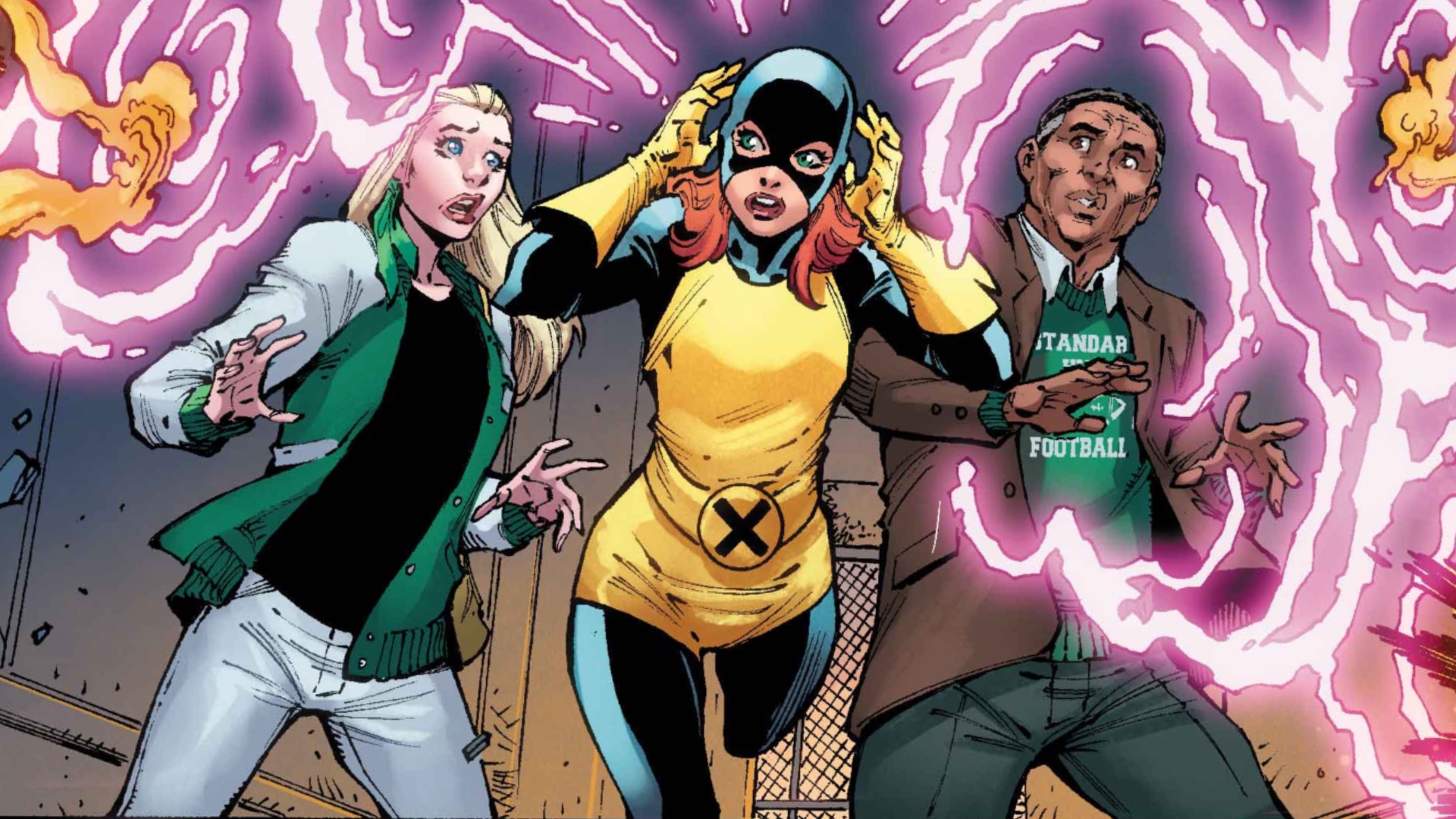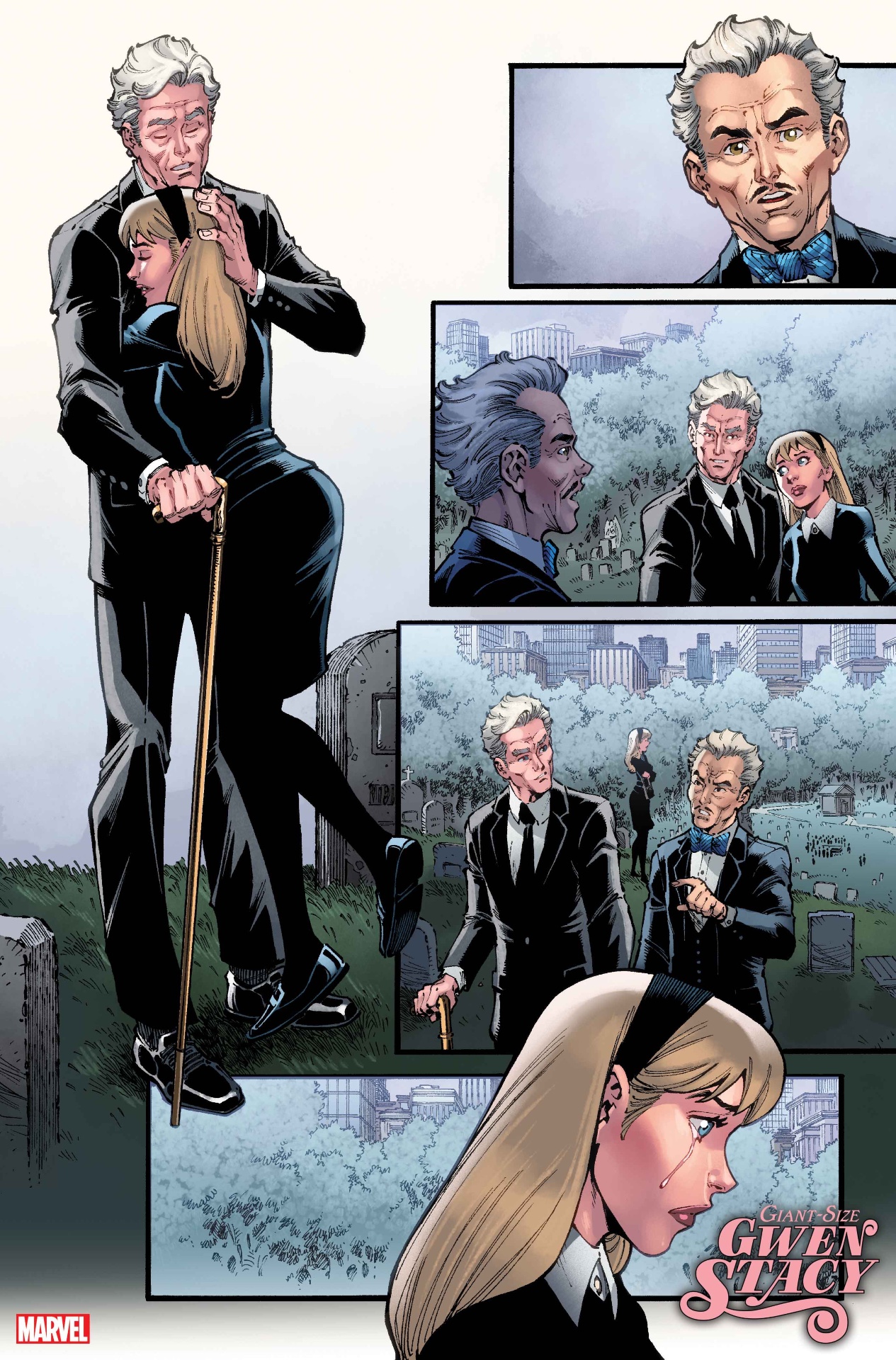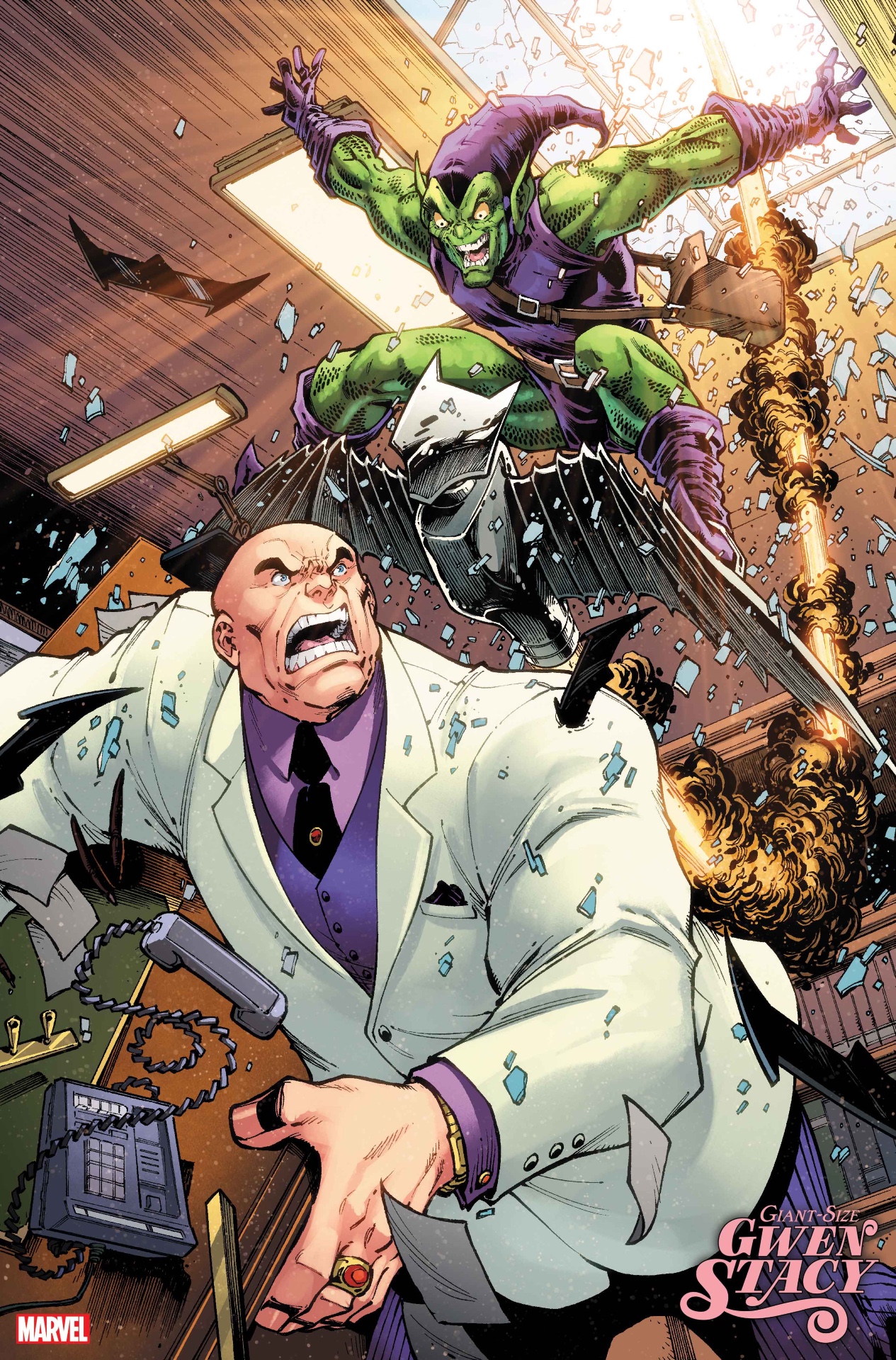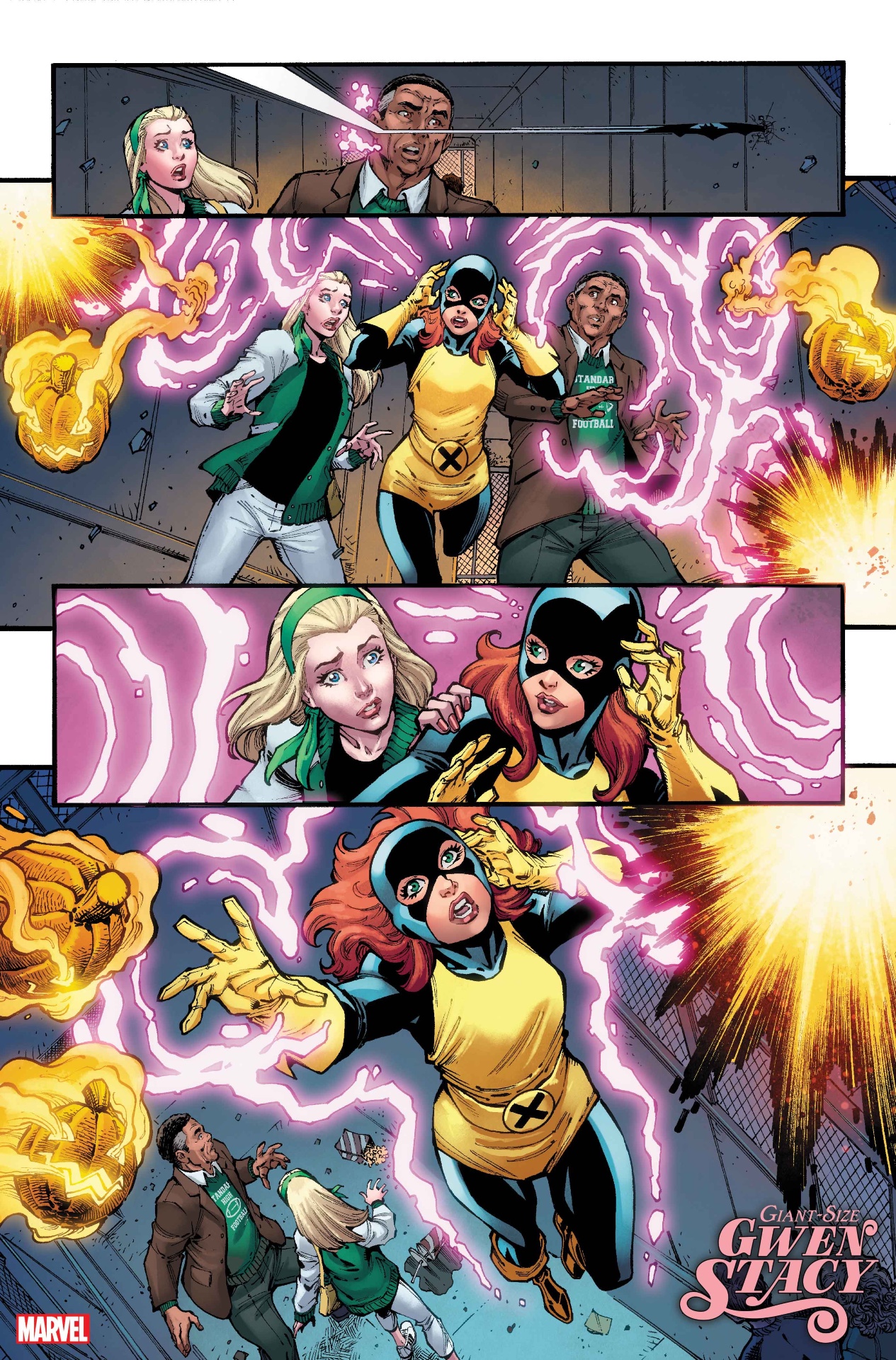Giant-Size Gwen Stacy #1 channels Silver Age charm for a pre-superhero flashback
Gwen Stacy returns to the spotlight - but not as Ghost Spider

It's been a little over two years since writer Christos Gage and artists Todd Nauck and Rachelle Rosenberg launched Gwen Stacy, a planned five-issue limited series starring the core Marvel Universe version of the girl who would become Ghost Spider, before she even met Peter Parker.

But the COVID-19 pandemic shuffled publisher's schedules, and the story's finale is just now coming out on August 10 in the form of Giant-Size Gwen Stacy #1, which combines the final two issues into one oversized comic.
Before the finale arrives, writer Christos Gage opened up to Newsarama about what it's like to write the core Gwen Stacy as a civilian after writing her Multiverse 'Variant' Ghost-Spider as a super hero, how much the story changed due to the delays (hint - pretty much not at all!), and what puts Gwen Stacy alongside icons like Thor, Captain America, and of course Spider-Man as Marvel Comics legends.
And oh yeah - we've also got some brand new interior pages from Nauck and Rosenberg along the way.
Newsarama: Christos, the number one question is, of course, how does it feel to finally put an ending on the Gwen Stacy story you and Todd Nauck started back in 2020?

Christos Gage: It feels great! I finished the last script literally a week before the pandemic caused a pause in the comics industry, so my part was basically done. But Todd was still working on issue 4, and I had been dying to see how he'd finish it up! He stepped in like no time had passed. Seeing it finished is a dream come true. I had started to worry it would be one of those stories that will forever remain incomplete.
Nrama: On that note, how close is what we see here to what you were planning before a certain pandemic got in the way? Did the change in format from two issues to a giant-size one-shot necessitate story changes?
Get the best comic news, insights, opinions, analysis and more!
Gage: Actually, it's exactly the same. Like I said, I finished the scripts before the pandemic brought the hammer down. What you'll see in the Giant-Size issue is what was always intended. Todd finished issue 4 and drew issue 5 much more recently, but for the life of me, I can't tell without checking where he stopped and where he started up again. He's always in the zone.
Nrama: Gwen Stacy has had something of a renaissance in recent years thanks to her Spider-Verse super hero identity of Ghost-Spider.
But your story has stripped away the super hero trappings to bring Gwen back to her core. Having written her as both super hero and civilian, what does focusing on the 'Gwen' of it all allow readers to learn about the 'Spider' part?

Gage: Focusing on a 'normal' Gwen shows that, regardless of whether or not she has powers, Gwen Stacy has the character of a hero. The determination. The strong sense of right and wrong. And perhaps most importantly, the compassion that drives her to help others. Without all that, the powers mean nothing. And even without the powers, Gwen Stacy is a force to be reckoned with.
Nrama: That said, she's still encountering characters such as the Green Goblin and the original X-Men. How does leaving one foot in that super hero realm affect the way you think about pacing and action in a story that is ostensibly about a regular high school girl?
Gage: On the one hand, I didn't want to cheat and give Gwen powers, super-weapons, or anything else of that nature. I wanted her to be a teenage girl...albeit a smart and tough teenage girl, whose father is a police captain and has no doubt taught her some things about taking care of herself.
But as you say, I wanted her firmly in the Marvel Universe. For inspiration, I looked at things like Kurt Busiek and Alex Ross's Marvels, in which ordinary human photographer Phil Sheldon interacts with the world of heroes and villains.
Handled right, that approach can make some of the things we take for granted in our super hero tales even more powerful and effective. Seeing Gwen come face to face with an up-and-coming Wilson Fisk in the final chapter was one of my favorite bits in the whole story.
Nrama: Up until recently, Gwen Stacy has been most associated with one of the greatest tragedies to ever strike the Marvel Universe, in a moment that has been called a loss of innocence for Marvel and a maturing of the publisher's stories.
How does having the foreknowledge of that tragedy as a writer impact the way you tell a story that predates that tragedy?

Gage: It informs it, but doesn't overwhelm it.
This isn't a story about Gwen's death. It's also not about her romance with Peter Parker. It's about her life, about who she is before ever meeting Pete. So it's not like I feel compelled to have an undertone of sadness to it all. We're all going to die. That doesn't invalidate the joy, fear and spectrum of emotions we experience along the way.
This is a story about Gwen being Gwen. Had she survived and married Pete, or married someone else and faded into the background, I don't think I'd be doing much differently. When she encounters Norman Osborn in this story, it's not because he will later kill her. It's because he's the father of her best friend and secretly a super-villain.
Knowing that he'll go mad and murder her down the road may add some pathos to it all, but it's flavor, not the main ingredient.
Nrama: Given your long Marvel history, I don't think I can name a mainstream Marvel hero or team you haven't written in some form or fashion.
What's different about stepping back and writing about someone who has often been a supporting character, especially in the incarnation in which you're writing her? What's so special about plain ol' Gwen Stacy that puts her in the leading lady category alongside super heroes like Spider-Man?
Gage: I think I've already discussed the qualities in Gwen that make her a strong protagonist by any reckoning. And I've always loved putting supporting characters into the spotlight, whether it was less well known heroes and villains in Avengers: The Initiative, or someone like Machine Man in the Iron Man 2020 series.
The difference in writing someone like that as opposed to an icon like Thor or Captain America is that you can't expect the audience to come to the table impressed. You have to earn it. I don't mean the character - I mean the creative team. I thought Todd did an amazing job combining modern sensibilities with a Silver Age feel, so hopefully I managed to pull my weight with Gwen.
I think my favorite scene is the one where we learn how she and Harry Osborn became friends - bonding over what it's like to have lost their mother. In what could be a moment of sadness and despair, they support each other and help each other carry on. Todd nailed it, even though it's 'just two people talking.'
Moments like that, for me, are what make a character. The difference with characters less known to the audience is you have to show them such moments, not assume they saw skinny Steve Rogers say "I can do this all day," on a big screen.
And honestly, that's how I'd rather do it.
I've been Newsarama's resident Marvel Comics expert and general comic book historian since 2011. I've also been the on-site reporter at most major comic conventions such as Comic-Con International: San Diego, New York Comic Con, and C2E2. Outside of comic journalism, I am the artist of many weird pictures, and the guitarist of many heavy riffs. (They/Them)



